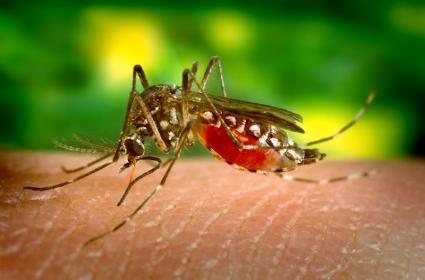
Council is working to keep pesky mossies at bay
« Back- Council have approved an integrated approach to minimising mosquito populations
- The aim of the new plan is to reduce the potential transmission of mosquito-borne diseases and encourage residents to prioritise protection against mosquito bite
- There are 13-known local species of mosquito in the region
The Goondiwindi Region's temperate subtropical climate, combined with the presence of over 200 species of mosquitoes in Queensland, has prompted the approval of a new Mosquito Management Plan (MMP) by Council. This plan takes an integrated approach to effectively control and manage mosquito populations in areas where residents reside within the region.
Mosquitos are a public health concern due to their ability to act as a carrier and transmitter of several diseases such as Ross River Virus, Murray Valley Encephalitis, Malaria and Japanese Encephalitis, among others.
The aim of the new MMP is to reduce the potential transmission of mosquito-borne diseases from the 13-known local species and to encourage residents to engage in an active and healthy lifestyle both indoors and outdoors all year-round.
Councillor Rob Mackenzie who holds the portfolio for Waste, Regulatory Services and Planning said Council’s MMP aims to reduce the potential for transmission of mosquito-borne diseases to humans and pets by disrupting the natural cycles and influencing the activity of the community to minimise exposure to them.
“There are a number of methods we can use to manage mosquitoes and one is by treatment and monitoring of Council-owned properties,” Cr Mackenzie said.
To minimise populations in and around urban areas, Council will oversee and maintain facilities such as parks, gardens, drainage systems, and roads.
“Residents are accountable for their private property,” Cr Mackenzie said, “Backyard breeding of mosquitoes in old tubs or buckets, or near overgrown dams or unsealed septic tanks can contribute to the mosquito population.
Another way the MMP will manage the hazard is the application of chemical control on mosquito populations, used judiciously, to maximise its benefits while minimising any adverse impact on the environment.
“When this type of management is used in conjunction with biological controls, for instance, the introduction of fish into natural environments, and the aforementioned methods, then control is easier and environmental impacts are lessened,” Cr Mackenzie said.
Council aims to keep residents in the region informed about measures that prioritise protection against mosquito bites. The Council website offers information on identifying potential breeding sites, cleaning up these areas, and ways to avoid being bitten.
https://www.grc.qld.gov.au/residents/environmental-health/mosquitoes

